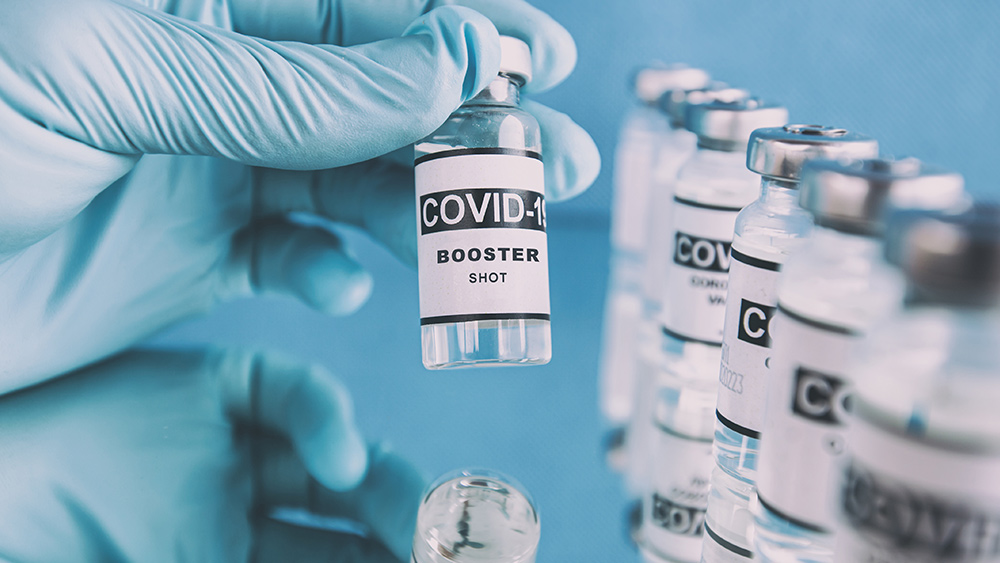Shocking study details how much BPA is found in a receipt
10/02/2018 / By Tracey Watson

For some time now, consumers have been made aware of the dangers of Bisphenol A (BPA), a chemical used in many types of containers, including in baby bottles. BPA is used to harden plastics, prevent contamination of foods, and to stop cans from rusting. In recent years, several studies have confirmed that BPA affects endocrine function (hormonal balance) in animals and humans, and new moms have been warned to avoid baby bottles that contain this chemical and to take other steps like not boiling polycarbonate bottles or heating them in the microwave.
While most health-conscious individuals carefully avoid plastics and other containers which are made with BPA, many of us are unaware that straws, plastic lids, ATM receipts, airline tickets and cash receipts also contain this chemical. And a shocking new study by researchers from Stockholm University and the University of Alberta has found that BPA absorbed through the skin when handling cash register paper lingers dangerously in the body.
An endocrine disruptor with serious health effects
BPA has been linked to both male and female infertility, early puberty, hormonal breast and prostrate cancers, and metabolic disorders like polycystic ovary syndrome.
Natural Health 365 reported:
Research has linked BPA with causing an imbalance in the body’s hormones. The endocrine disruptor can negatively impact the metabolism, immune system and the reproductive system. It can even cause cancer.
BPA is also linked with poor sperm quality, reproductive dysfunction, early puberty, thyroid problems, insulin resistance, heart disease, obesity and autoimmune diseases. It is especially toxic to developing babies in pregnant mothers due to its ability to raise the chances of a miscarriage, chromosomal errors and other genetic problems.

With serious health effects like these, it is important to determine what the sources of possible contamination are. (Related: Cash register receipts still poisoning us.)
Further evidence that BPA lingers in the body
For their study, the Stockholm and Alberta University researchers had participants handle cash receipts for five minutes, then don gloves for two hours before washing their hands. Urine levels of BPA were tested both before and after the test.
Although BPA levels were highest within the first two minutes after the experiment, participants still had elevated levels of the chemical in their urine a full week later! On the other hand, when study participants were asked to eat cookies containing BPA, their urinary levels of BPA were elevated for five hours, but completely normalized within 24 hours.
It takes just five seconds for BPA to enter your bloodstream after contact with your skin, and if your fingers are wet or oily, absorption increases 10-fold. And BPA on cash receipts poses other subtle dangers because it can transfer to coupons, paper money or grocery lists that are stored in close proximity to it. (Related: Worse than BPA? Toxic BPS chemical found hiding in receipts, recycled paper.)
As much of a danger as this poses for consumers, it is easy to understand how much more of a health hazard BPA can be for cashiers who handle hundreds of receipts on any given day. As Natural News previously reported:
People who handle receipts frequently are believed to be more at risk. A cashier who used hand cream (which would enhance the permeability of the chemical) might sustain exposures approaching 50 micrograms per kilogram of body weight. People working in retail have 30 percent more BPA than other Americans.
While the federal government has warned that 93 percent of Americans have BPA contamination, no warnings have been issued specifically related to retail receipts – an omission that needs to be addressed urgently so that consumers and workers alike can take steps to protect their health.
Learn more about the dangerous chemicals in your life by visiting Toxins.news.
Sources for this article include:
Submit a correction >>
Tagged Under:
bisphenol A, BPA, cash receipts, child health, disease causes, Endocrine disruptors, hidden dangers, hormonal imbalances, men's health, reproductive health, toxic chemicals, women's health
This article may contain statements that reflect the opinion of the author





















